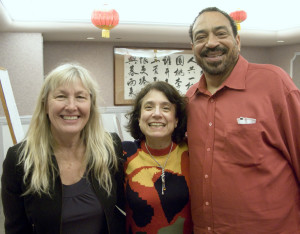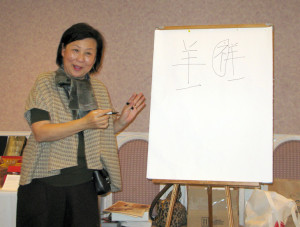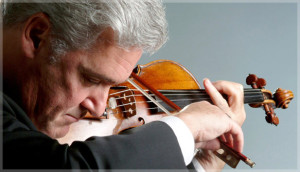
 The headline tells it all; the writer will elaborate briefly for readers who have not heard Pinchas Zukerman play or who wonder about Beethoven and the violin. However, the available superlatives all fall away in remembering this musical experience. On January 26, 2014, Pinchas Zukerman was both the conductor and the solo violinist for London’s Royal Philharmonic performing three works by Beethoven: Overture to The Creatures of Prometheus; Violin Concerto in D maj; Symphony No. 5. One could say it was a celestial experience if it were not that Beethoven insists upon being an earthling. The music rips right into whatever it means to be human, the myriad things it means to be human, and celebrates life here on earth. The people wanting to build that foul pipeline of tar sands oil across American lands could never have heard Beethoven. Oddly enough, Beethoven’s music somehow encompasses even them. Mr. Zukerman’s low key approach to conducting is deceptive. Those who have witnessed famous adults and highly skilled ten year olds dramatically waving their violin bows in order to tell their audience when they are playing something important and when they are ready for an ovation might find the absence of dramatics disappointing, but his style allows the music to be the only focal point. Mr. Zukerman’s playing is masterful, a joy. In the lengthy concerto it ranged from exquisite simplicity to complex, virtuosic performance that left one breathless. The concerto’s last movement is a delightful dance. The theme sounds like fun, but it is able to be playful because it dances on top of such musical complexity and Beethovenian energy. One moment in Mr. Zukerman’s performance particularly revealed how thoroughly he lives in the music. His back to the audience, he conducted with spare movements and played. He then turned toward the audience, lifted violin to chin, bow to violin, and began to play his solo part. The time between is what fascinated me. He knew physically exactly how long he had to make that 180 turn and begin to play. No rush. Mr. Zukerman would be great at the most challenging jump rope routines. Everyone has heard the 5th Symphony or at least knows how it begins. It was the theme for the Huntley/Brinkley news decades ago. It was the Victory symphony in World War II. The problem with something that we all think we know is that we often forget to listen to it. The Royal Philharmonic and Pinchas Zukerman’s performance of Beethoven’s 5th Symphony transmitted the greatness of Beethoven’s sense of life. It is possible to hear it telling the tale of human being, alone and together. The music stretches the reach of what we want to think of as Western Civilization, of Culture with the largest Capital C, of human potential good and bad. At the end, when the clowns, chimpanzees, whales, toddlers, miners, mothers, trees, lilies, and weeds, are all in the music, exuberant with life moving in every cell, the listener is elevated to thrill in being. This listener levitated above the crowded staircase out the symphony through the traffic to find her car had been smashed and robbed. This listener, reminding herself that even that was included in the 5th Symphony, even those who want to build the pipeline, was thankful to have heard it.
The headline tells it all; the writer will elaborate briefly for readers who have not heard Pinchas Zukerman play or who wonder about Beethoven and the violin. However, the available superlatives all fall away in remembering this musical experience. On January 26, 2014, Pinchas Zukerman was both the conductor and the solo violinist for London’s Royal Philharmonic performing three works by Beethoven: Overture to The Creatures of Prometheus; Violin Concerto in D maj; Symphony No. 5. One could say it was a celestial experience if it were not that Beethoven insists upon being an earthling. The music rips right into whatever it means to be human, the myriad things it means to be human, and celebrates life here on earth. The people wanting to build that foul pipeline of tar sands oil across American lands could never have heard Beethoven. Oddly enough, Beethoven’s music somehow encompasses even them. Mr. Zukerman’s low key approach to conducting is deceptive. Those who have witnessed famous adults and highly skilled ten year olds dramatically waving their violin bows in order to tell their audience when they are playing something important and when they are ready for an ovation might find the absence of dramatics disappointing, but his style allows the music to be the only focal point. Mr. Zukerman’s playing is masterful, a joy. In the lengthy concerto it ranged from exquisite simplicity to complex, virtuosic performance that left one breathless. The concerto’s last movement is a delightful dance. The theme sounds like fun, but it is able to be playful because it dances on top of such musical complexity and Beethovenian energy. One moment in Mr. Zukerman’s performance particularly revealed how thoroughly he lives in the music. His back to the audience, he conducted with spare movements and played. He then turned toward the audience, lifted violin to chin, bow to violin, and began to play his solo part. The time between is what fascinated me. He knew physically exactly how long he had to make that 180 turn and begin to play. No rush. Mr. Zukerman would be great at the most challenging jump rope routines. Everyone has heard the 5th Symphony or at least knows how it begins. It was the theme for the Huntley/Brinkley news decades ago. It was the Victory symphony in World War II. The problem with something that we all think we know is that we often forget to listen to it. The Royal Philharmonic and Pinchas Zukerman’s performance of Beethoven’s 5th Symphony transmitted the greatness of Beethoven’s sense of life. It is possible to hear it telling the tale of human being, alone and together. The music stretches the reach of what we want to think of as Western Civilization, of Culture with the largest Capital C, of human potential good and bad. At the end, when the clowns, chimpanzees, whales, toddlers, miners, mothers, trees, lilies, and weeds, are all in the music, exuberant with life moving in every cell, the listener is elevated to thrill in being. This listener levitated above the crowded staircase out the symphony through the traffic to find her car had been smashed and robbed. This listener, reminding herself that even that was included in the 5th Symphony, even those who want to build the pipeline, was thankful to have heard it.
Monthly Archives: February 2014
Barantschik, Zukerman, Kremer: Great Violinists in San Francisco, Part I
 Part I: Music lovers in San Francisco had a festival of great violinists from late January to Groundhog’s Day. It was easy to forget the inevitable post-holiday let down when in the presence of artistry that lifted the spirit while demanding an open heart and mind. Alexander Barantschik, San Francisco Symphony’s Concertmaster, was leader and soloist on Jan. 22, 2014, when members of the SFSymphony joined him in works by Mozart, Mendelssohn, Britten, and Piazzola. With the exception of Piazzola’s works, each composer wrote the selections when very young. Very young: Mozart was 16 when he wrote Divertimento in F maj.; Mendelssohn was 13 when he wrote Concerto in D min. for Violin and String Orchestra; Britten was 10-13 when he wrote the themes, songs, and tunes which he made into Simple Symphony when he was 20. The words charming, delightful, beautiful are the ones which instantly come to mind for the Mozart Divertimento. The second movement Andante has a delicious lyrical, nearly seductive style. It ends with a Rondo which is bright and exciting. The players did so well capturing the light-on-water brilliance. Barantschik’s playing in the Mendelssohn Concerto had all the virtuosic abilities the piece deserves. He is an appropriate inheritor of the piece which was written for Eduard Rietz, the violinist to whom Mendelssohn dedicated important works and who was Concertmaster when Mendelssohn revived Bach’s Saint Matthew Passion. Before joining the SFS, Barantschik served as concertmaster of the London Symphony Orchestra. San Franciscans are fortunate to hear his performances with the orchestra and in chamber performances. The Concerto is full of energy and musical invention. Mendelssohn demonstrates his ability to see the many different dimensions in which the music can be arranged, altering the order of phrases and finding new combinations for them. Never more devoted to chess playing than to music making, the young genius gives us music that thrills the audience. Britten’s Simple Symphony was a surprise to audience members who know Britten only through “heavy” music like operas Turn of the Screw. This was fun and tuneful. The four movements, Boisterous Bourree, Playful Pizzicato, Sentimental Saraband, Frolicsome Finale, live up to their titles to create a frolicsome suite. The musicians played with relish. I first heard Piazzola’s music when a friend played tapes he had brought back from Argentina many years ago. It is tango, but it is more than “just tango,” and also shows how complex and rich tango can be. Barantschik was accompanied by soloist Seth Asarnow on bandoneon and the SFSymphony players. At the risk of robbing the music of its fascination, it’s worthwhile to assert that it is serious music. It is music that grew in a composer whose consciousness included jazz and Stravinsky (and Stravinsky was a composer whose consciousness had said hello to jazz as well). Tango is popular music which might prevent some music writers from taking it seriously; not this one. After all, the tango is famous, and infamous, for being about sex, a very mysterious and serious source of art.
Part I: Music lovers in San Francisco had a festival of great violinists from late January to Groundhog’s Day. It was easy to forget the inevitable post-holiday let down when in the presence of artistry that lifted the spirit while demanding an open heart and mind. Alexander Barantschik, San Francisco Symphony’s Concertmaster, was leader and soloist on Jan. 22, 2014, when members of the SFSymphony joined him in works by Mozart, Mendelssohn, Britten, and Piazzola. With the exception of Piazzola’s works, each composer wrote the selections when very young. Very young: Mozart was 16 when he wrote Divertimento in F maj.; Mendelssohn was 13 when he wrote Concerto in D min. for Violin and String Orchestra; Britten was 10-13 when he wrote the themes, songs, and tunes which he made into Simple Symphony when he was 20. The words charming, delightful, beautiful are the ones which instantly come to mind for the Mozart Divertimento. The second movement Andante has a delicious lyrical, nearly seductive style. It ends with a Rondo which is bright and exciting. The players did so well capturing the light-on-water brilliance. Barantschik’s playing in the Mendelssohn Concerto had all the virtuosic abilities the piece deserves. He is an appropriate inheritor of the piece which was written for Eduard Rietz, the violinist to whom Mendelssohn dedicated important works and who was Concertmaster when Mendelssohn revived Bach’s Saint Matthew Passion. Before joining the SFS, Barantschik served as concertmaster of the London Symphony Orchestra. San Franciscans are fortunate to hear his performances with the orchestra and in chamber performances. The Concerto is full of energy and musical invention. Mendelssohn demonstrates his ability to see the many different dimensions in which the music can be arranged, altering the order of phrases and finding new combinations for them. Never more devoted to chess playing than to music making, the young genius gives us music that thrills the audience. Britten’s Simple Symphony was a surprise to audience members who know Britten only through “heavy” music like operas Turn of the Screw. This was fun and tuneful. The four movements, Boisterous Bourree, Playful Pizzicato, Sentimental Saraband, Frolicsome Finale, live up to their titles to create a frolicsome suite. The musicians played with relish. I first heard Piazzola’s music when a friend played tapes he had brought back from Argentina many years ago. It is tango, but it is more than “just tango,” and also shows how complex and rich tango can be. Barantschik was accompanied by soloist Seth Asarnow on bandoneon and the SFSymphony players. At the risk of robbing the music of its fascination, it’s worthwhile to assert that it is serious music. It is music that grew in a composer whose consciousness included jazz and Stravinsky (and Stravinsky was a composer whose consciousness had said hello to jazz as well). Tango is popular music which might prevent some music writers from taking it seriously; not this one. After all, the tango is famous, and infamous, for being about sex, a very mysterious and serious source of art.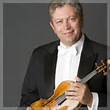
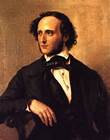 pictures: top: a bandoneon; above, L to R: Alexander Barantschik, Felix Mendelssohn; below, Astor Piazzola, Benjamin Britten.
pictures: top: a bandoneon; above, L to R: Alexander Barantschik, Felix Mendelssohn; below, Astor Piazzola, Benjamin Britten.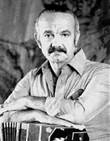
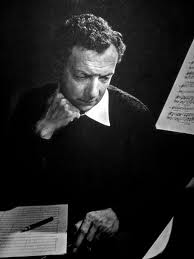
Gung Hay Fat Choy! Happy New Year!
 It’s the Year of the Horse. Come celebrate with Lively friends at the Meet Us at Ming’s luncheon/banquet. It will be an amazing event. The food, veg and non-veg, is so delicious. The attendees are all good looking, intelligent, and witty–just like you! It is difficult to make a seating arrangement. Everyone is interesting. However, they may also be calculating how to win the auction items of their choice. Guittard Chocolate is one of the great prizes in the silent auction. It’s so appropriate that the Guittard Chocolate Co. is part of this event with their generous donation. Guittard is one of very few businesses started in the Gold Rush which is still around and successful today. Since the Ming’s event is meant to support our educational programs, like The Gold Rush! This is a perfect match. It is very easy to fall in love with Guittard. After picking up the 10 lb block of chocolate and another box of chocolate treats, my car smelled like heaven. Come to Ming’s Feb.1st, tomorrow, at noon. Support the Lively Foundation. Supporting a supporter of our programs like Guittard Chocolate is a pleasure. Indulge in the best chocolate and know that by doing it you help education in your community! Wow! Lively wants you to be happy.
It’s the Year of the Horse. Come celebrate with Lively friends at the Meet Us at Ming’s luncheon/banquet. It will be an amazing event. The food, veg and non-veg, is so delicious. The attendees are all good looking, intelligent, and witty–just like you! It is difficult to make a seating arrangement. Everyone is interesting. However, they may also be calculating how to win the auction items of their choice. Guittard Chocolate is one of the great prizes in the silent auction. It’s so appropriate that the Guittard Chocolate Co. is part of this event with their generous donation. Guittard is one of very few businesses started in the Gold Rush which is still around and successful today. Since the Ming’s event is meant to support our educational programs, like The Gold Rush! This is a perfect match. It is very easy to fall in love with Guittard. After picking up the 10 lb block of chocolate and another box of chocolate treats, my car smelled like heaven. Come to Ming’s Feb.1st, tomorrow, at noon. Support the Lively Foundation. Supporting a supporter of our programs like Guittard Chocolate is a pleasure. Indulge in the best chocolate and know that by doing it you help education in your community! Wow! Lively wants you to be happy.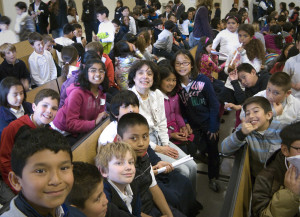 2013 Pictures: Students in San Mateo with Leslie Friedman; Jeanne Watson, L. Friedman, Godfrey Watson; Vicky Kwoh Ching
2013 Pictures: Students in San Mateo with Leslie Friedman; Jeanne Watson, L. Friedman, Godfrey Watson; Vicky Kwoh Ching